Penang First Impressions
We first visited Penang on our Southeast Asia cruise and knew that we wanted to return. Here was a moderate-sized city with a historical old town as well as lots of modern condo towers with amenities. The best infrastructure we’d seen in Southeast Asia (except for Singapore), plus reasonable prices. To top it off, after having spent 11 days in hotels in Phuket and Langkawi, Penang’s large selection of available Airbnbs at reasonable prices would be a welcome change.

A Random Experience on a Ferry
Langkawi to Penang was a smooth and easy 3½-hour ferry ride that cost us $18 each. Arriving at our assigned seats, we found a Chinese woman in the window seat, an empty seat next to her, a bag on the next one (one of our seats), and the aisle seat (our other seat) empty. We moved the bag to the seat next to the woman and took our seats.
A few minutes later, a man wearing the same color as the ferry workers, not too happy that the bag had been moved, asked what the problem was. We explained that we were sitting in our assigned seats. He told us to move to the window and the next seat and in a condescending voice ordered the Chinese woman into the aisle seat. We assumed he worked for the ferry line so did as we were told. Nope, he was just a passenger and the owner of the bag we had (how dare we!) moved.
Things Are Not Always as They Seem
Turns out he is a retiree from France who rides his bike all over Southeast Asia in the winter. He used to concentrate on Thailand, but it has become too crowded for his tastes. So, he is branching out to Malaysia and Indonesia. While we had a pleasant conversation, it was obvious that he did not like Chinese tourists. This was a theme we observed throughout Southeast Asia. Establishments and locals seemed to like the Chinese tourist money but the tourists themselves, not so much. After observing a few passing interactions, we can see how cultural differences might cause others to feel as they do.
Our Airbnb in Penang

The apartment in which we stayed was in a modern tower with security, in the Tanjung Tokong neighborhood, about a 15-minute ride from the historic core, a bit longer on the bus. The complex had a full-size grocery store in the basement, a pool (which we never used), and a gym in the building that we could join for $15 a week, which we used most days. The apartment cost $40 a night and had A/C in both the living room and bedroom. We booked it for two weeks, looking forward to spending a couple of weeks of having a normal life rather than the tourist life we’d been living for the past 11 days.

The Positives of Penang
What’s to like about Penang…a lot! Bargain prices, almost everyone speaks English, and good infrastructure including crosswalks with walk signals that are generally observed by drivers. Water that’s drinkable after boiling it, toilets (at least some) that can handle flushed toilet paper. Diverse culture (Chinese, Indian, Malay), which is reflected in their delicious food. Good medical care at reasonable prices with doctors who speak English. Yes, we got our teeth cleaned in yet another country and it cost $32 each. And did we mention delicious food available at great prices?! As long as you’re willing to eat Malaysian, Indian, Chinese, or Thai food…Western food was quite a bit higher.
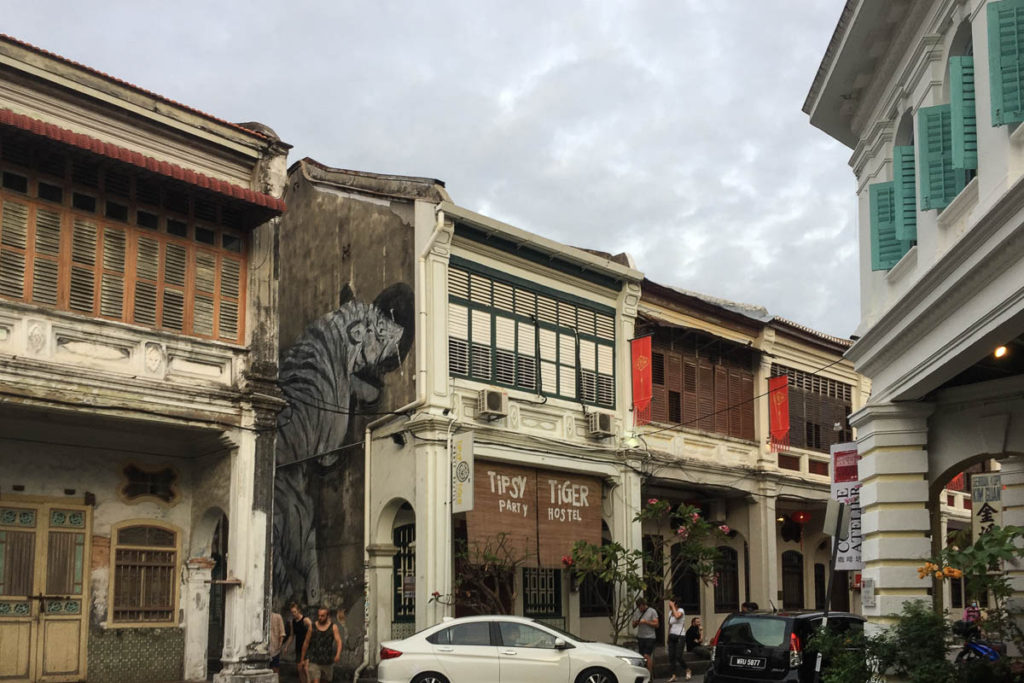
Cultural Diversity
Penang is majority Chinese Buddhist, with Hindu, Muslim and Christian thrown in. This mix gave the island a quite different feel than Langkawi, which is majority Muslim. An interesting tidbit that we found out from one of our taxi drivers: Penang is the only region in Malaysia that does not have a king, just a regional governor.
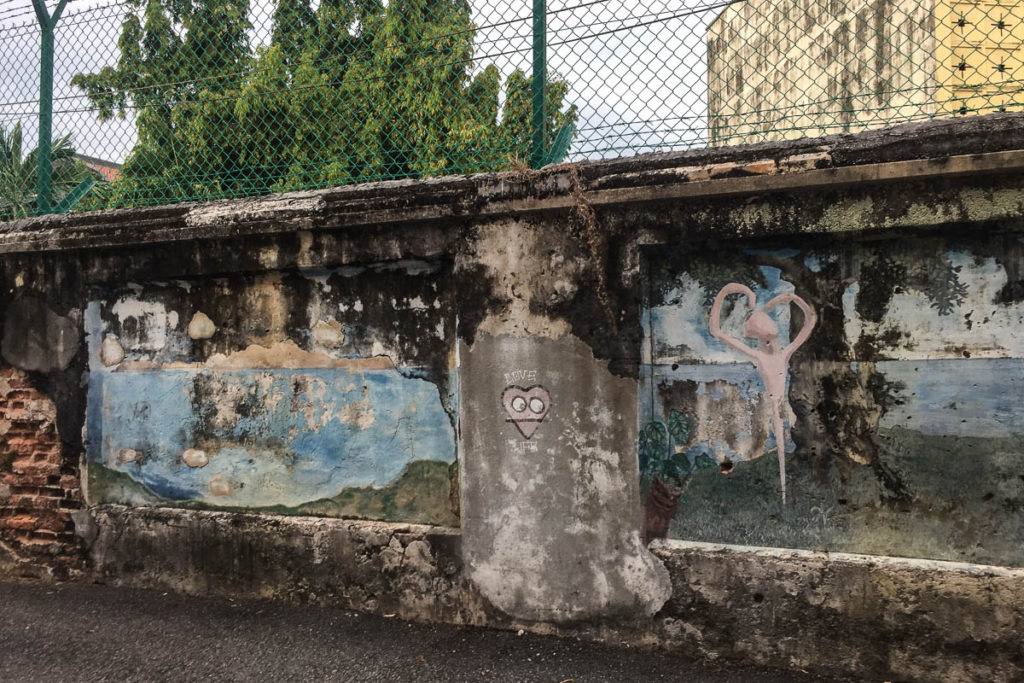
The Not So Great About Penang
What’s not to like? It’s hot all year round…think Florida in the summer. Because of the heat, we fell into a pattern of staying in the apartment and visiting the gym during the day. About 5 pm as the sun was getting lower in the sky, we would wander outside and explore. Alcohol, especially imported, was expensive, at least compared to Thailand. Beer in a restaurant would average about $3-4 depending upon the size, and almost as much in the grocery store. Finally, the beach is just okay, the water is cloudy, and the sand is not easy to walk along, but hey, it’s got a beach. We found out from our Penang friends that in March or April, the air quality can get a little bad from crop burning in Indonesia. We will be monitoring this. (So far this year, it hasn’t been bad.)
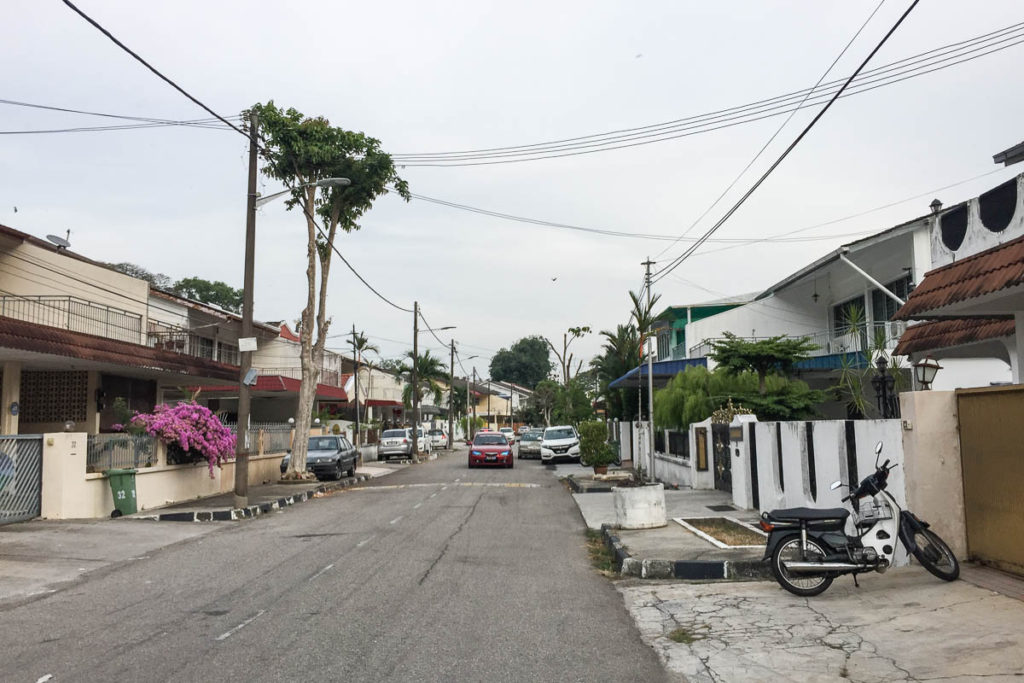
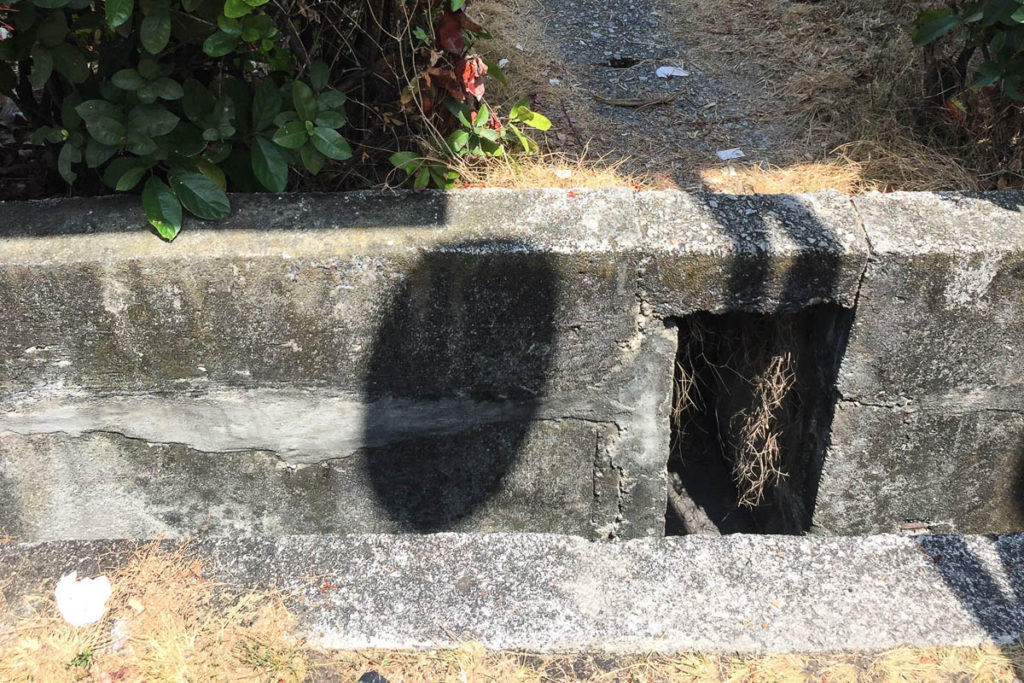
Our Outdoor Activities While in Penang
Yummy and Inexpensive Food

Almost daily in the evening, we would venture out to one of the nearby hawker stalls, for yummy, cheap food. Gurney Drive Hawker Centre was about a 20-minute walk, and just a couple blocks further was Gurney Plaza, a huge modern mall. After a week and a half, we discovered another hawker center, Shen Fu Café, only a block from our apartment in the opposite direction!
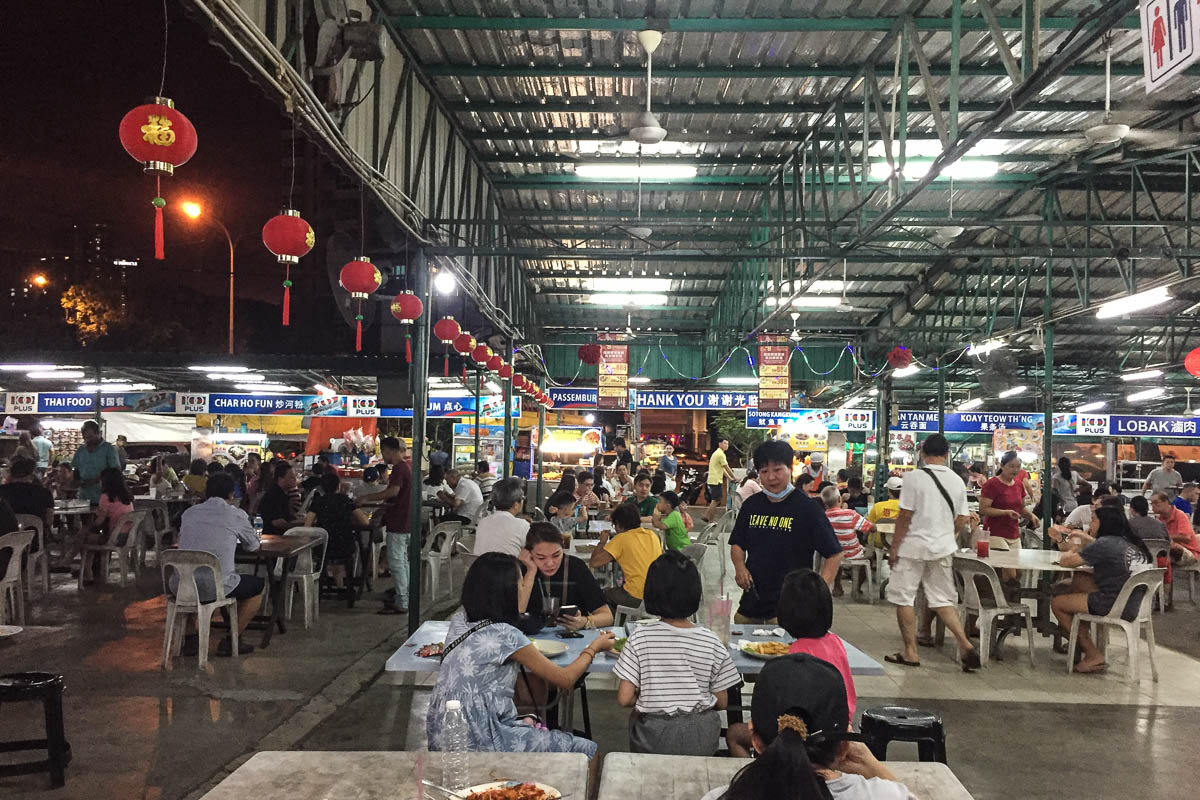
Straits Quay, about 20 minutes in a different direction, had several restaurants, a couple of which we enjoyed for traditional Malaysian food. Our friends recommended No Eyed Deer, across the street from our apartment, where we went several times for lunch.

Yes, you might have noticed while in Penang, we were eating out much more than usual. It was cheaper than buying groceries, and the food was delicious! One of our hawker stall meals cost 15 Malaysian ringgit (RM), $3.18 for two dishes. That evening, we shared a Guinness for RM9.00 ($2.20). At our nearby hawker stand, the average cost for dinner for both of us was 38 ringgits ($9.30). That included two dishes, a large Tiger beer (from Singapore and is produced by Heineken Asia Pacific), and a large watermelon juice. Eating in sit-down restaurants was a bit more expensive, but not much.
Favorite Dishes
Our favorite dish for lunch at No Eyed Deer was Laotian Laksa…we had it three times! Laotian Laksa is rice noodles in a spicy soup with beef (or chicken) slices, with bean sprouts and basil. Asam Laksa is a typical Malaysian dish, with slight variations. Basically, it’s a spicy and sour fish soup with thin or thick rice (sometimes wheat) noodles, assorted vegetables and herbs, and usually fish or chicken.
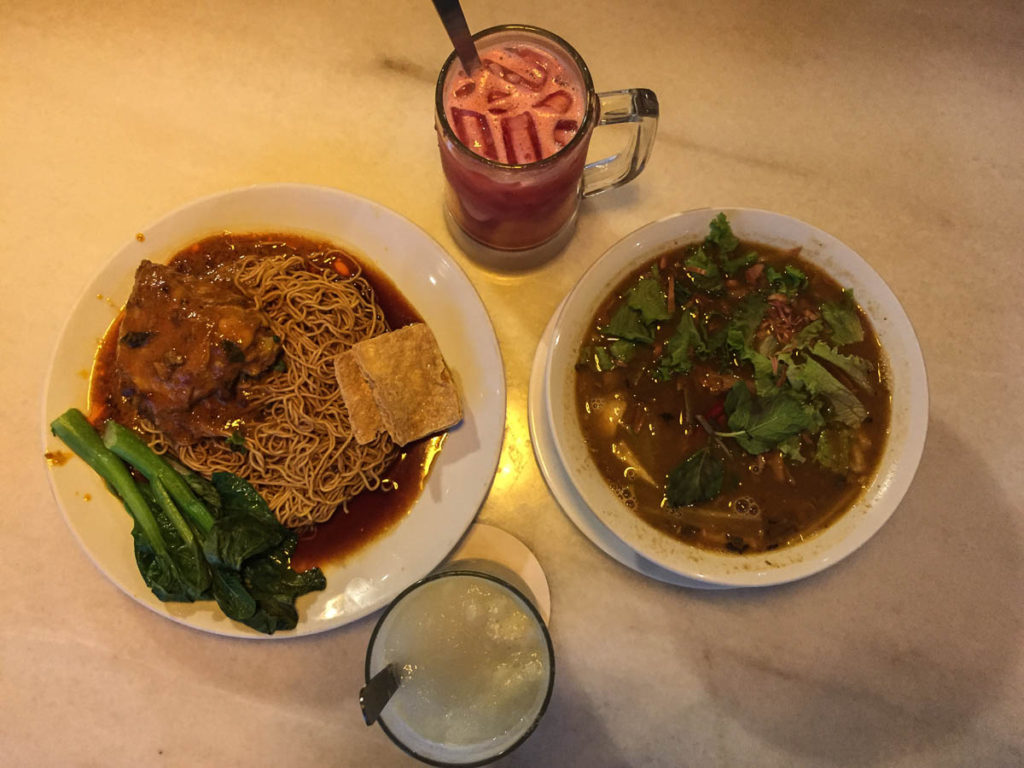
Char Koay Teow is another of our favorite dishes. It consists of flat rice noodles stir-fried with shrimp, bloody cockles, Chinese lap cheong (sausage), eggs, bean sprouts, and chives in a mix of soy sauce. Generally, the default is spicy, but as Westerners we were usually asked, and of course, said yes!
See more on Malaysian food in our Langkawi post. We also enjoyed the traditional Malaysian dish, Nasi Lemak (Ian loves that coconut rice!) all over Malaysia, including in Kuala Lumpur, one of the stops on our cruise.
Festivals and Celebrations
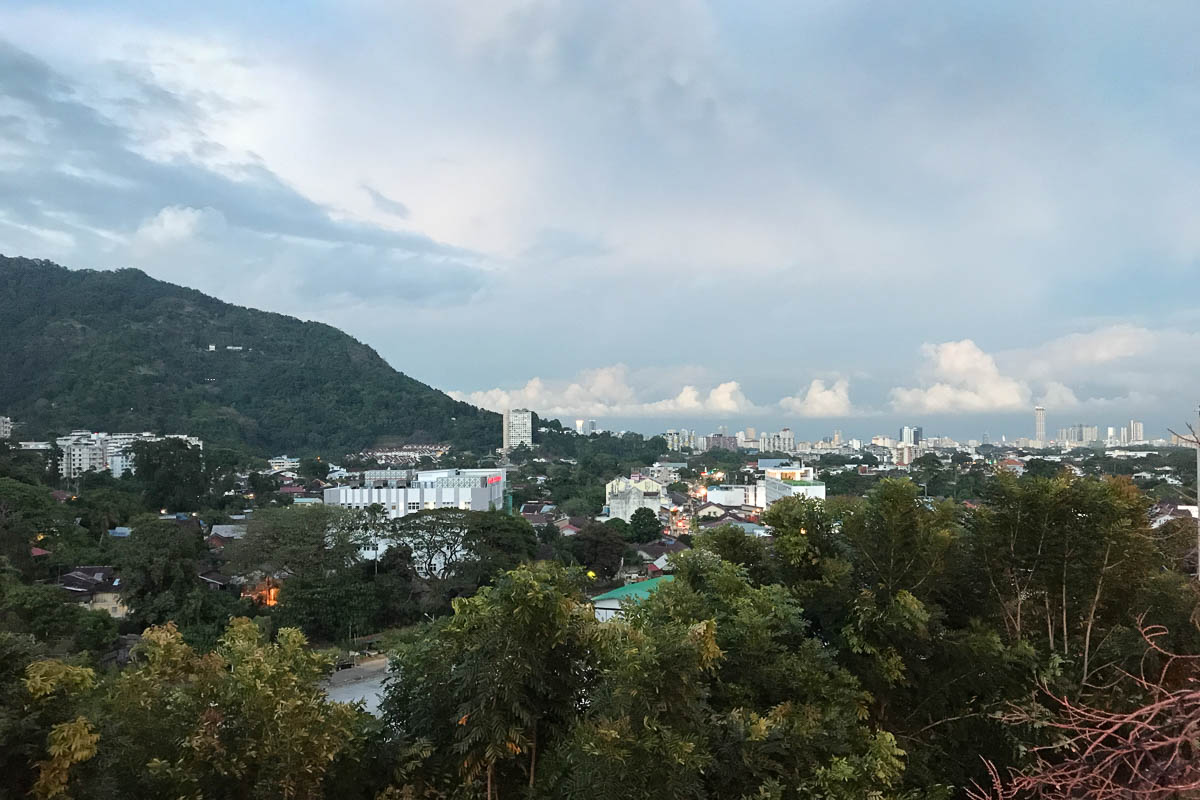
Kek Lok Si
Kek Lok Si in Penang is the largest Buddhist temple in Malaysia and an important pilgrimage center for Buddhists from throughout Southeast Asia. Every year during Chinese New Year, the temple is adorned with tens of thousands of lights for about a month. Since we visited this magnificent temple near the end of that month of lights (and after Chinese New Year), we were able to enjoy it without massive crowds.

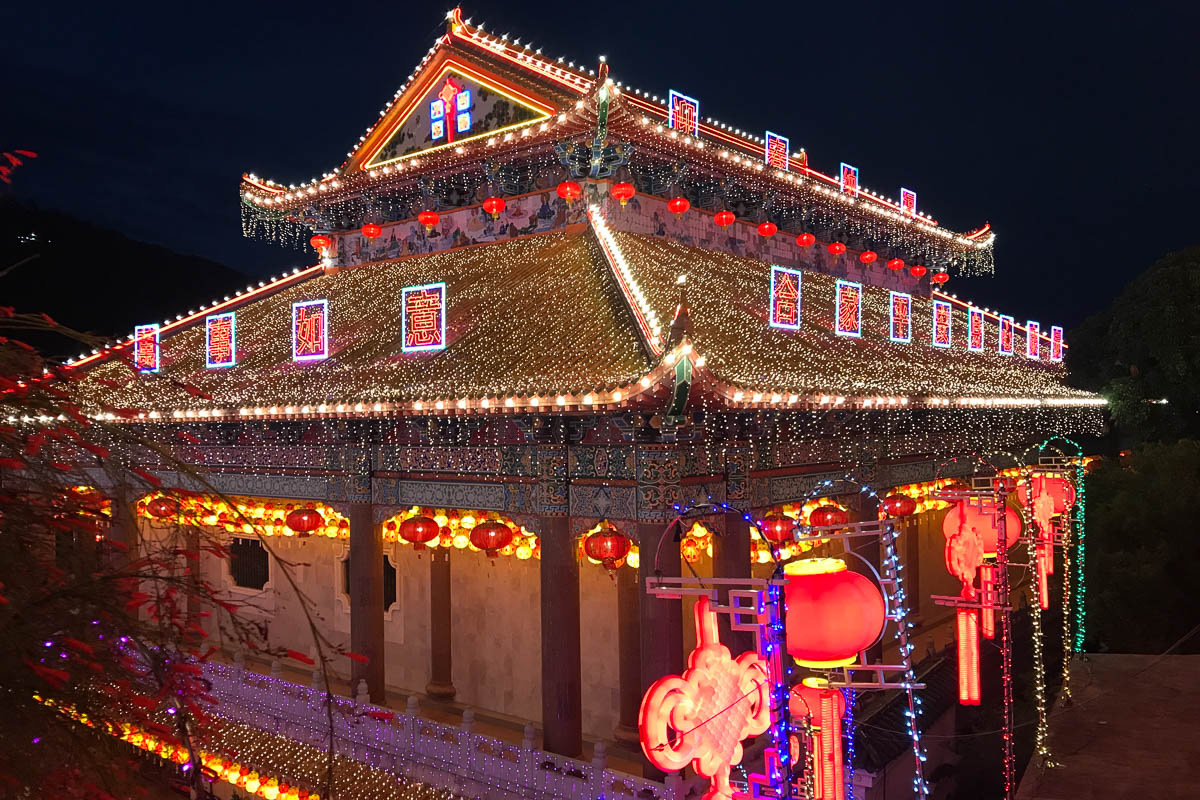
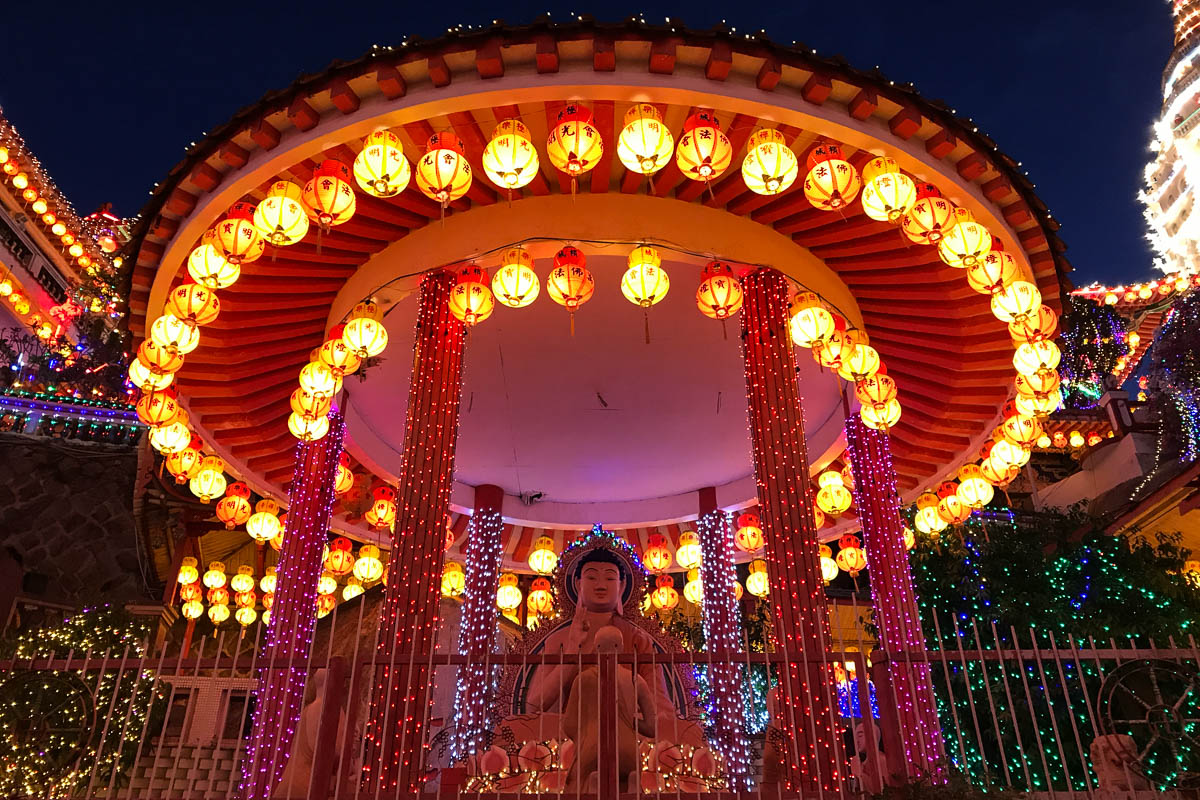
Miao Hui Chinese New Year Celebration
We also went to the Miao Hui Chinese New Year celebration in the Heritage Precinct (old town) of George Town, Penang, Malaysia. Lots of cultural stuff, seven stages, dragon (or lion?) dancers to the beats of drums, and of course lots of food.
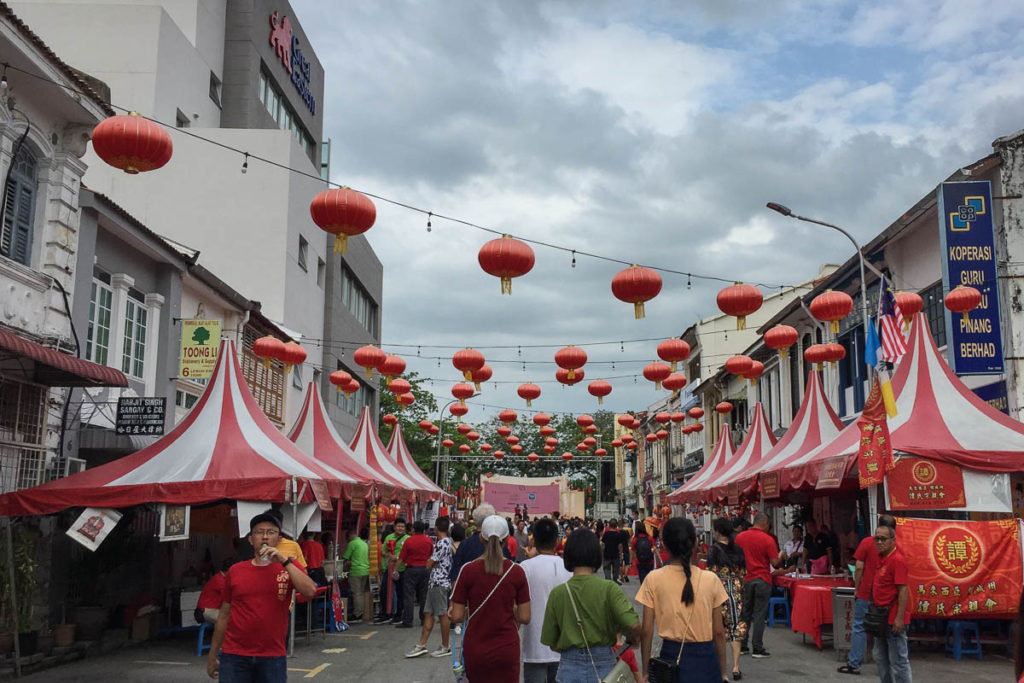
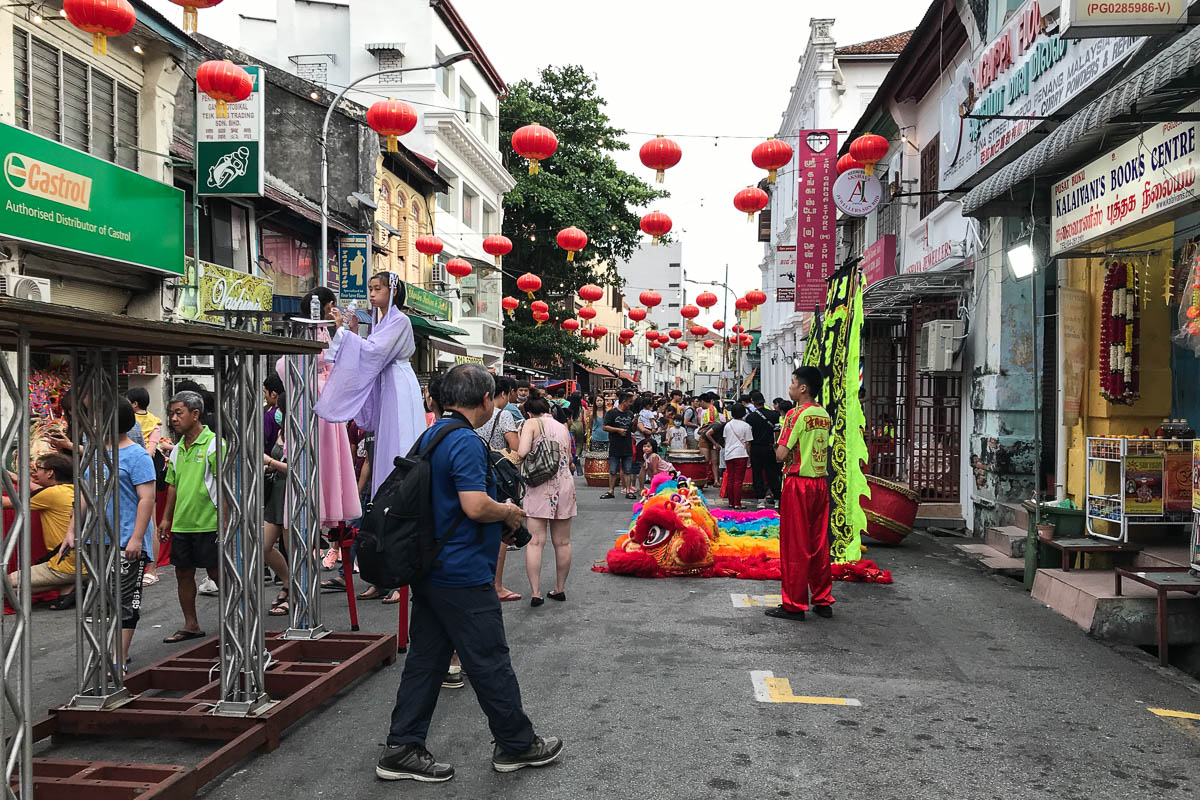
We had debated whether to go at all, what with the coronavirus (originating in China) and lots of Chinese locals and tourists. It was all outdoors, and we went early (about 5:00 PM) before it got too crowded, so we didn’t get to see the big parade at 11:00 PM. Turns out it was fortuitous that we went, as volunteers were handing out masks. Previously, we were unable to find masks for purchase anywhere.

Thaipusam Hindu Festival
Thaipusam is an annual Hindu festival of penance and thanksgiving. In Penang, it includes a 4 km procession to bring the statue of Lord Muruga, who represents virtue, youth, and power, on a gold chariot to the Nattukottai Chettiar Temple on the top of a hill. Hindus pierce their bodies with metal skewers and carry urns of milk on their heads. Again, we were outdoors, and Ann particularly enjoyed seeing families dressed in colorful matching outfits.

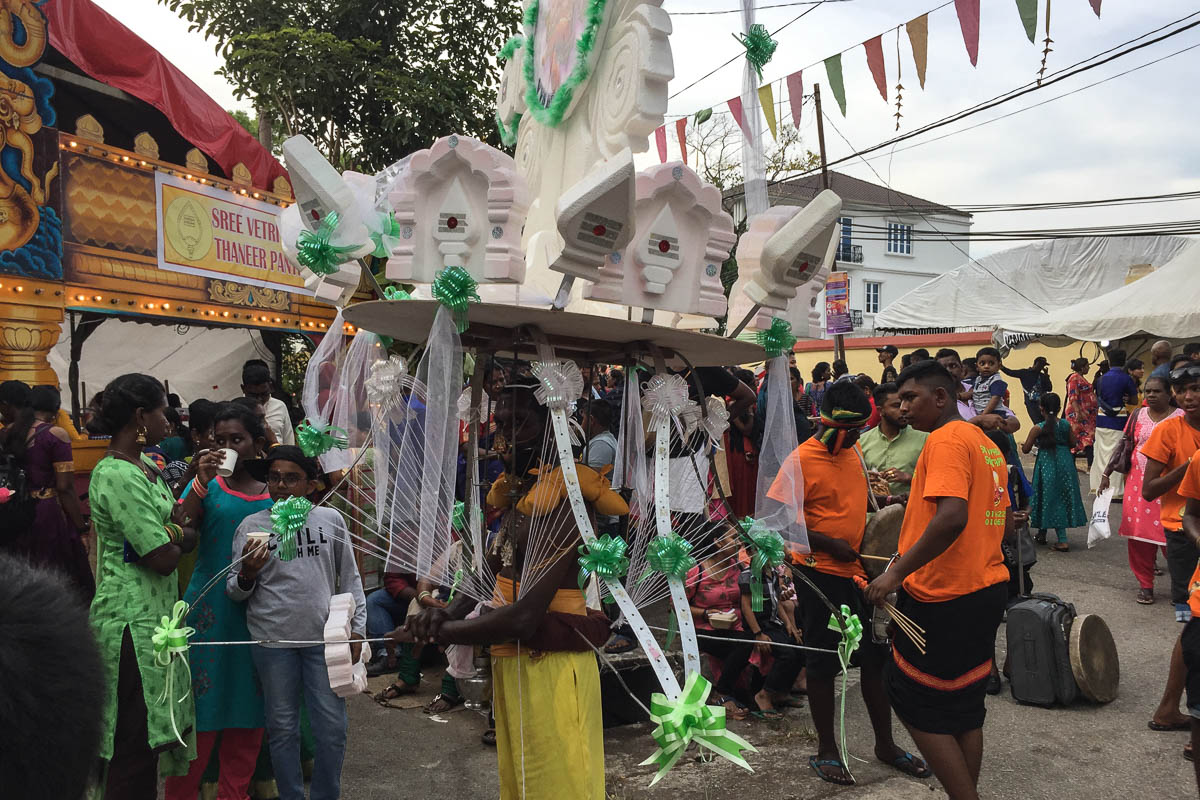

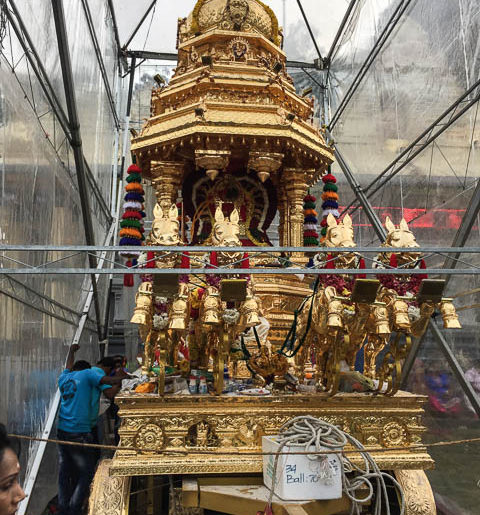
A Day Spent with New Friends
When we were on the cruise, we met Linda, who is Malaysian and lives in Penang half the year. She introduced us to her friends who also live in Penang at least part of the year. Linda invited us to visit her when we were in Penang. Unfortunately, she was traveling during our time here, so we didn’t get to see her.
Our Personalized Tour
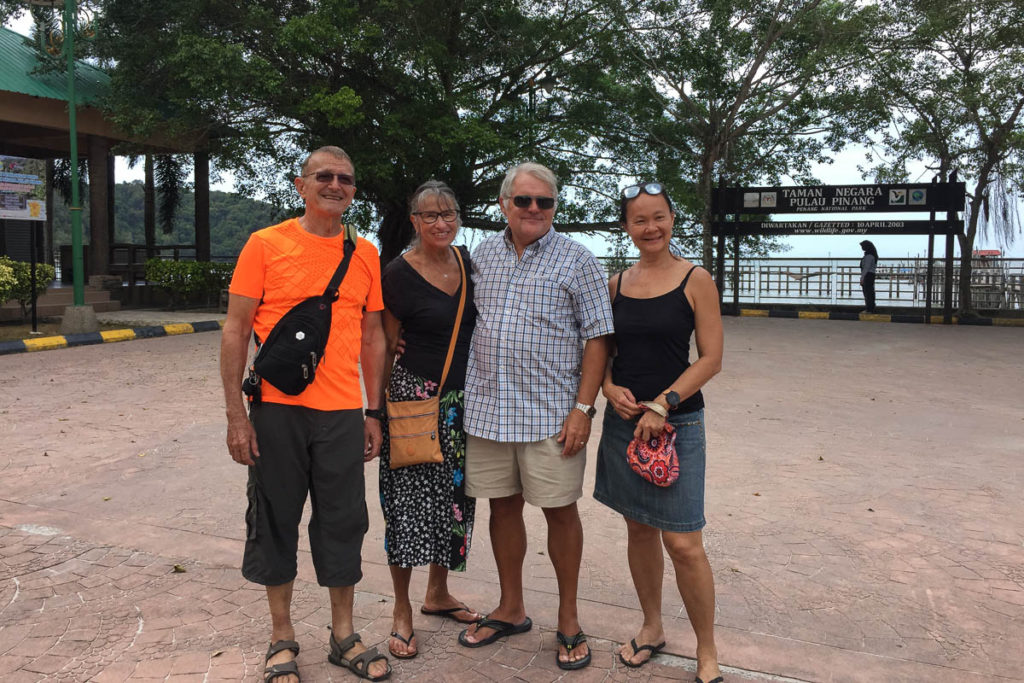
But we were fortunate to spend a day with our other new friends. Lydie and Bernard picked us up at our Airbnb and took us to lunch at their favorite Indian restaurant. We dined family style so got to sample a variety of delicious dishes.

After lunch, we were toured around the various neighborhoods in the northern half of the island. Both Lydie and Bernard shared lots of interesting tidbits about the people, culture, housing, hiking, beaches, etc. They brought us to Penang National Park on the water, with lots of interesting trees, plus hiking trails. Bernard enlightened us with his knowledge about the local flora and fauna.
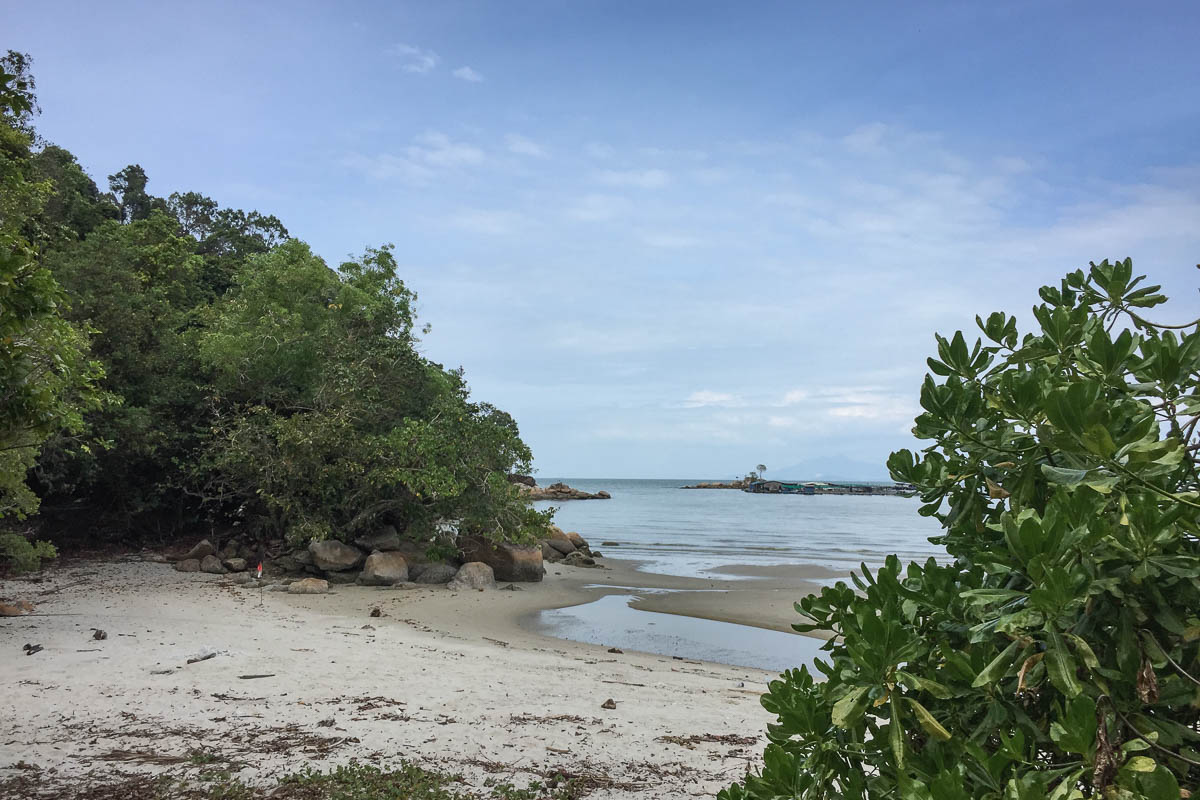
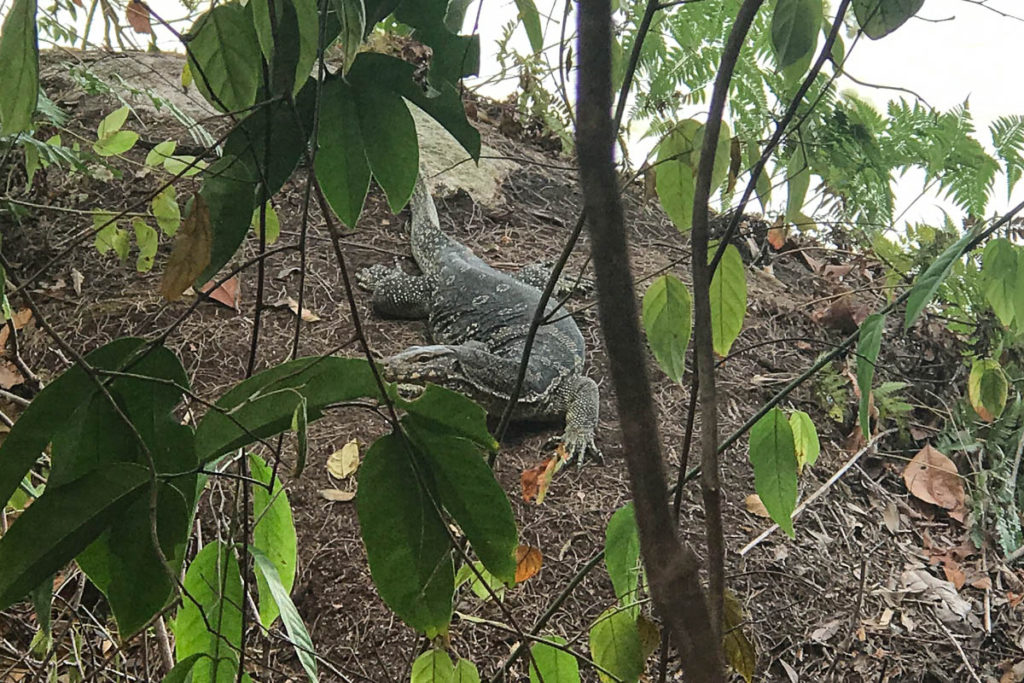
One of the many highlights of our personalized tour was a drive through a unique village where the fishermen bring their boats right up to their houses at high tide via canals that are dry at low tide. And then back out to fish at another high tide. This village was on the east side of the island of Penang, which is much less inhabited than the west side.
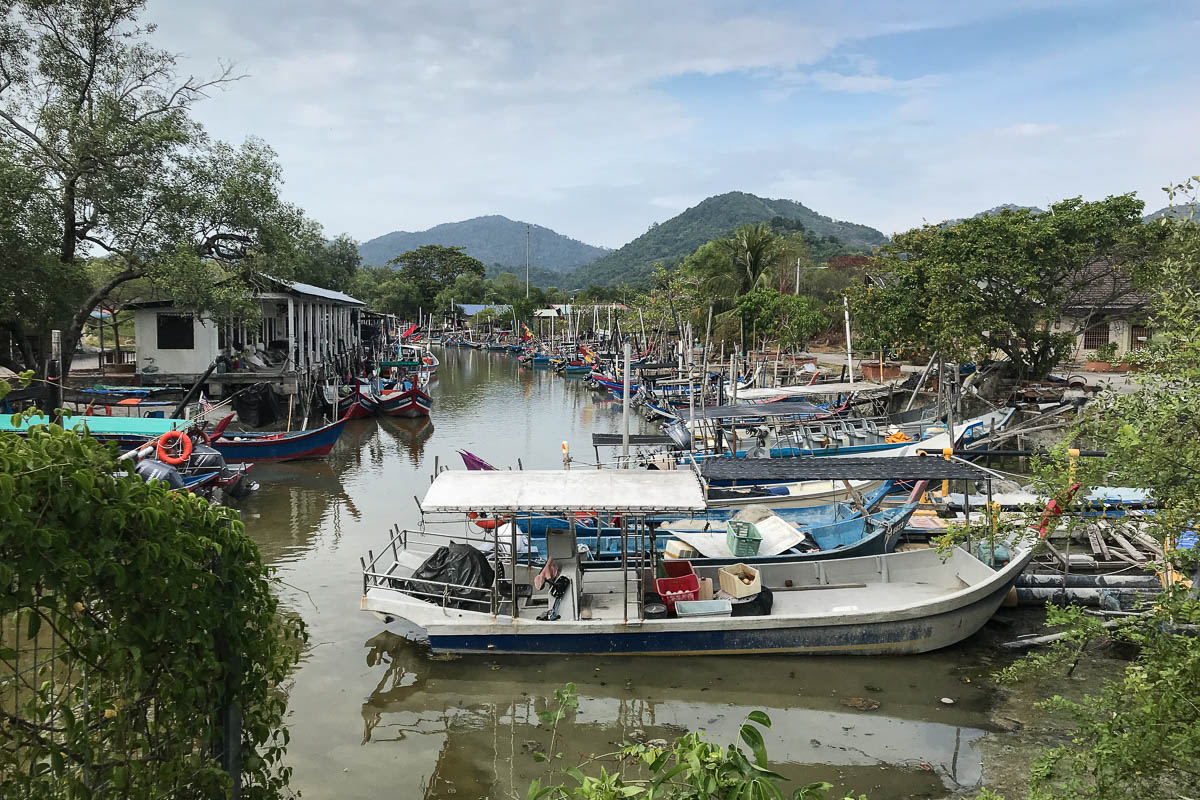
We ended the afternoon back at our friends’ condo, near the beaches at the northern end of the island, with its sweeping views overlooking the neighborhood and sea.
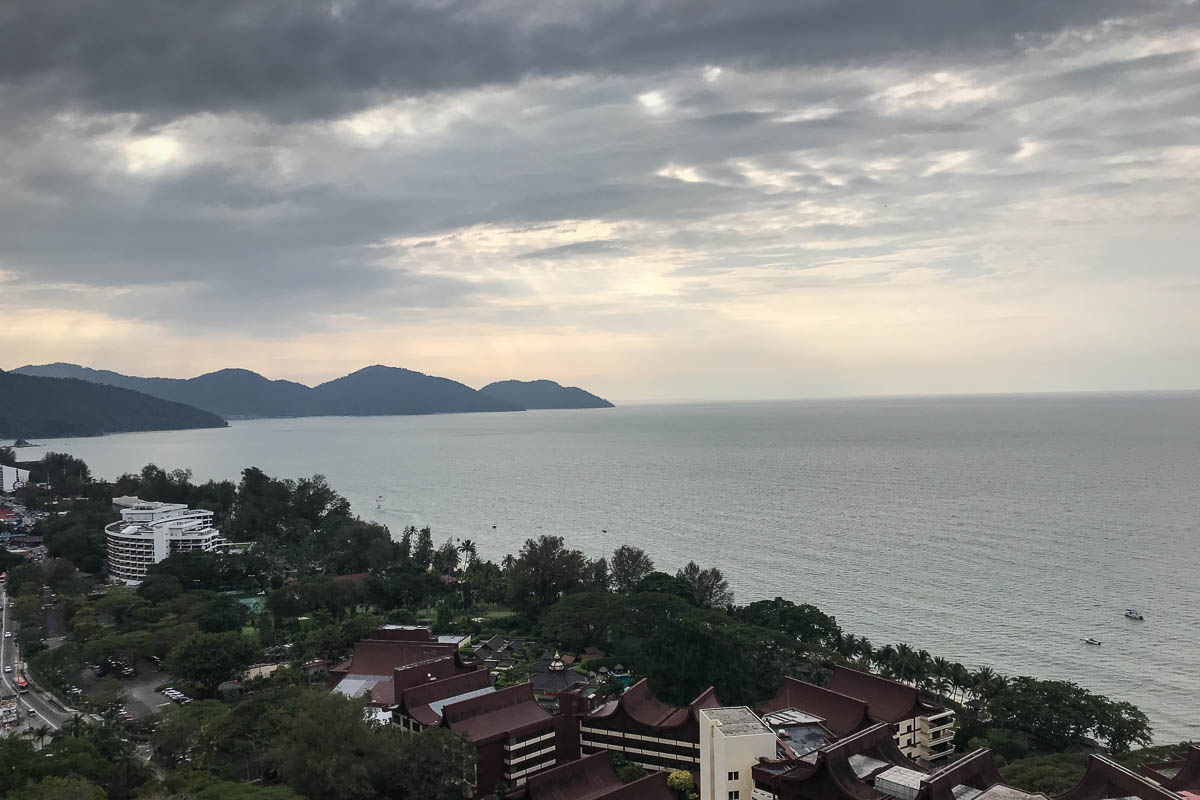
Food and More Food
Next on the agenda of our extra special day with new friends was coffee, tea, fruit, and home-baked traditional Chinese New Year cakes in the home (in the same building) of our other friends from the cruise, Lorna and Phee. We ended the day all dining together, including Lydie’s and Bernard’s teenage daughter, Chloe, at their local hawker stand, after which Bernard drove us back south to our apartment.
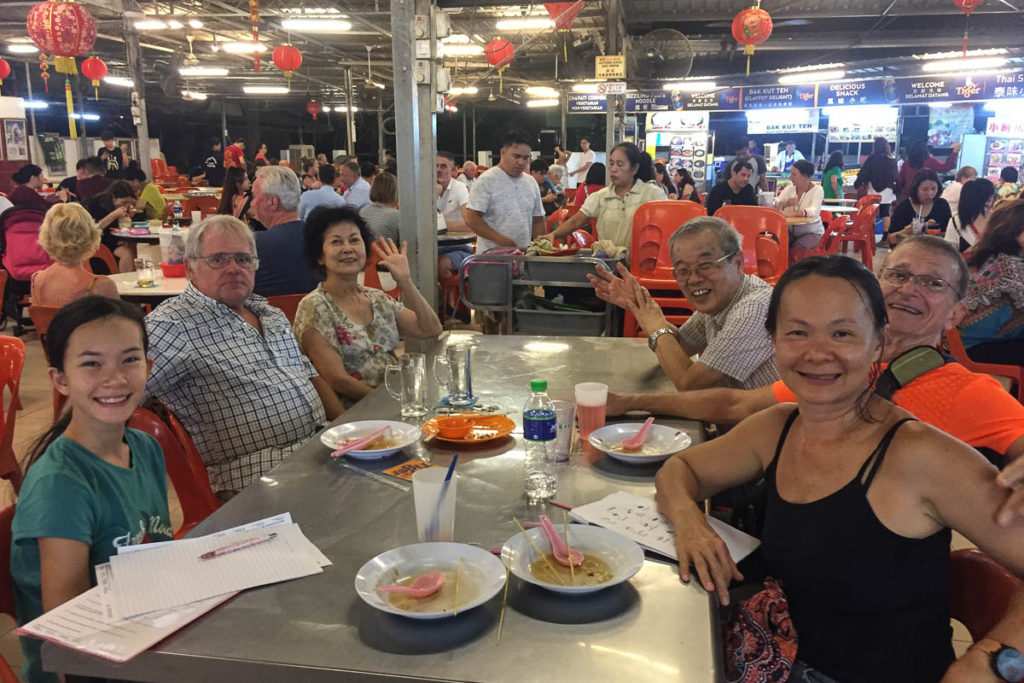
We stayed in Penang three days longer than originally planned because of the developing crisis which we describe here.
Penang Wrap-Up
After two and a half weeks in Penang, while the heat was overpowering and sapped our energy, we found a lot to like about Penang. Considering that we have friends here now, we just might entertain the idea of making it our winter home.
Next Up: Taipei, Taiwan and Southeast Asia Wrap-Up
Ian and Ann
